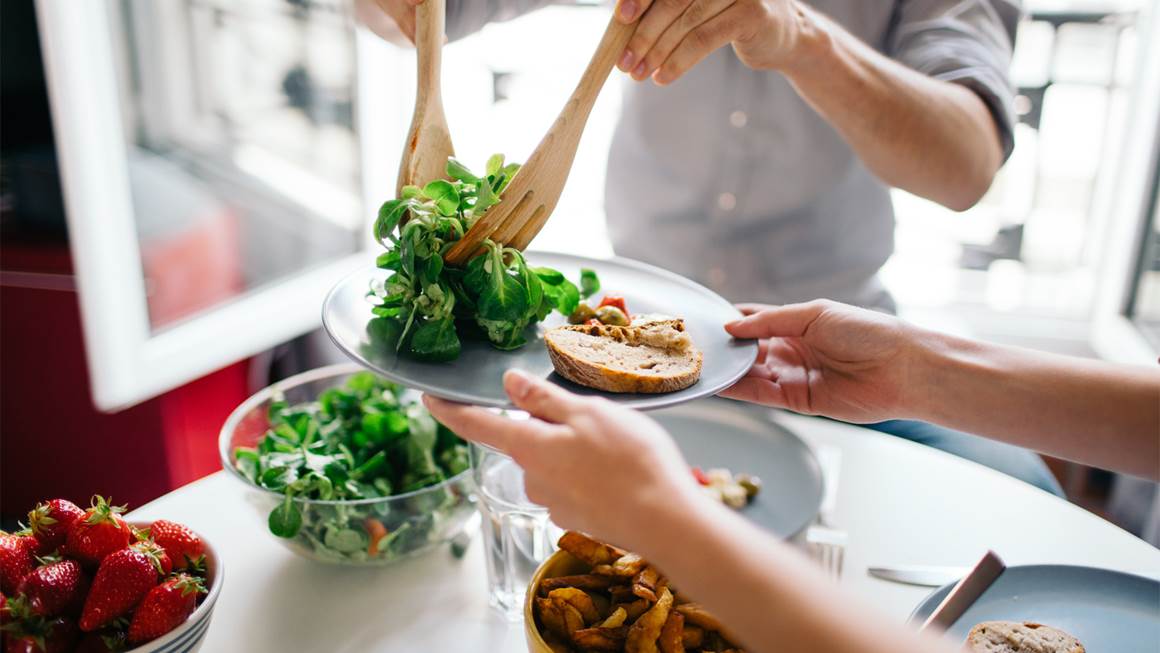High blood pressure (or hypertension) is linked to an increased risk of heart disease and stroke, so it’s important to do what you can to control your blood pressure. Making dietary changes can help. In fact, a recent study found that diet changes may have the biggest impact on reducing heart disease risk in people with hypertension. Here’s what you need to know.
DASH can help
A recent study looked at various lifestyle changes that help lower blood pressure levels, including diet, weight loss and physical activity. The study found that the most profound impact on reducing heart disease risk comes from following the Dietary Approaches to Stop Hypertension (DASH) eating pattern.
These findings add to the evidence supporting DASH, which has long been recommended for people who want to control or treat high blood pressure. The DASH plan includes:
| Food group | How much? | What’s one serving? |
|---|---|---|
| Daily servings | ||
| Grains | 6–8 | 1 slice bread 1/2 cup any cooked grain |
| Meats, poultry, and fish | 6 or less | 1 ounce meat, fish or poultry 1 egg |
| Vegetables | 4–5 | 1/2 cup raw or cooked vegetable 1 cup raw leafy greens |
| Fruit | 4–5 | 1/2 cup or one medium fruit 1/4 cup dried fruit |
| Low-fat or fat-free dairy products | 2–3 | 1 cup milk or yogurt 1.5 oz. (50 g) cheese |
| Fats and oils | 2–3 | 1 tsp oil |
| Weekly servings | ||
| Nuts, seeds, dry beans, and peas | 4–5 | 1/2 cup peas or beans 1/3 cup nuts 2 tbsp nut butter |
| Sweets | 5 or less | 1 tbsp sugar |
The DASH eating pattern also advises choosing foods that are low in saturated fat, trans fat and salt/sodium.
The simplest way to follow the DASH dietary pattern is to think of your plate in quadrants. At every meal, fill two quadrants (half of your plate) with vegetables and fruit, fill one with whole grains, and the remaining quadrant with protein-rich foods such as fish, poultry or beans.
Choose these foods more often:
No single food can help lower your blood pressure; it’s the overall dietary pattern that matters most. However, some foods are high in nutrients that can help your blood pressure, including potassium , calcium, magnesium, fibre, antioxidants, protein and healthy fats. Here are some top choices to include in your eating plan:
- Plain Greek yogurt: high in protein, calcium, magnesium and potassium
- Berries: high in fibre and polyphenol antioxidants
- Fatty fish such as salmon and trout: high in protein and omega-3 fats
- Leafy greens such as kale and chard: high in potassium and magnesium
- Legumes such as black beans, chickpeas and lentils: high in fibre, potassium and magnesium
- Milk: high in protein, calcium, potassium and magnesium
- Seeds such as chia and flax: High in omega-3 fats and protein
- Sweet potatoes: High in magnesium, potassium and fibre
- Whole grains such as oats: high in fibre
- Avocado: high in fibre and potassium
You can incorporate many of these ingredients into your meal plans with recipes such as Black bean, edamame and avocado salad; Salmon with mango chutney; and Kale chickpea salad with trout.
What else helps manage high blood pressure?
In addition to following the DASH pattern, other lifestyle changes that can help manage blood pressure include:
- limiting alcohol consumption
- quitting smoking
- exercising regularly
A recent study found that regular physical activity can help reduce the risk of death from heart disease in people with high blood pressure. The study included 2,280 men who were followed over almost 30 years. The researchers found that men with high blood pressure and low levels of physical activity had more than double the risk of death due to heart disease compared to those with lower blood pressure and high activity levels.
No single food can help lower your blood pressure
it’s the overall dietary pattern that matters most.
What’s a good amount of activity to help manage high blood pressure? Aim for least 150 minutes of moderate-intensity activity each week, in bouts of 10 minutes or more. Learn more about physical activity.
- Learn more about the DASH dietary pattern.
- Learn more about your blood pressure.
